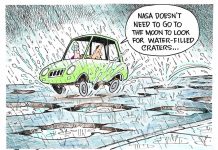A long time ago, back when I was spending all my free time immersed in the lands of Oz, following a brave young Hobbit on a worthy quest or enjoying lunch on the riverbank with Mr. Toad, my father would seek me out only to ask me why I didn’t spend my time reading about things that mattered — real things that could be useful.
Back then, I couldn’t explain to him the value to be found in stories, but these days researchers are beginning to discover that fiction can provide our children with lots more than an interesting diversion on a rainy afternoon. Studies show that children who read fiction exhibit greater degrees of empathy than their non-reading counterparts. It seems that reading fiction not only makes us smarter, but it also makes us better people.
Webster defines empathy as “the feeling that you understand and share another person’s experiences and emotions: the ability to share someone else’s feelings.” Back in my early reading days, children’s literature embraced the cute and the homespun, with heroes and heroines who looked a lot like me, sounded a lot like me and had adventures that could have happened outside my back door.
Aside from the occasional forays into the fantastical, kid’s books offered solid stories that taught solid morals and didn’t stray too far into the fringes of established society. It was a simpler time, and growing up with those stories instilled in me a love of reading that I carry with me to this day. It also led me to begin exploring the adult department of the library at the tender age of 10, looking for answers to questions that adults had determined I was not ready for and seeking stories that gave true insight into the mysterious world around me.
Fast-forward 45 years and Harry Potter has entered the scene, thrilling young readers with action and adventure and spawning its own magic-filled genre. The year 2005 brought us “And Tango Makes Three,” the book that made readers gasp with its portrayal of two male penguins who fall in love. “Uncle Bobby’s Wedding” appeared in 2008 with a loving portrait of same-sex marriage long before it became a political and social hot button.
Children’s literature is changing, pushing the envelope, making sure that young readers in this complicated age are able to see the world through the eyes of the wide variety of people that make up their everyday universe.
“George” by Alex Gino recently landed on my desk, with its plain cover and the emphatic statement, “Be Who You Are” gracing the back. Aimed squarely at the fourth- through sixth-grade student, George tells the story of a young fourth-grade boy who considers himself to be a girl. A touching tale of courage, George reminds us of the value of accepting differences and being who you are in a way that may be startling to some and comforting to others.
Numerous picture books and fiction works help young readers understand children facing the pain of poverty. “Yard Sale” by Eve Bunting depicts a family forced to sell their home due to economic struggles, and “Paper Things” by Jennifer Richard Jacobsen tells the story of Ari, a young girl who finds herself homeless.
These books depict real kids, facing real problems. Kids such as George, who wants people to accept him as a girl, and Ari, who sometimes has to come to school in stained clothes and can’t afford to buy lunch, are possible victims of bullying unless they come across another child who can empathize with them, a child who knows just a little bit about what they are going through, a child who has walked a mile in their shoes.
A child who reads.
So, join us at the library. In addition to learning about science, nature, history and a myriad of other things that matter, you can also learn about people, and who knows? You just might change the world.
Jodi Prather is an assistant in the children’s department of the Bartholomew County Public Library and can be reached at [email protected].




